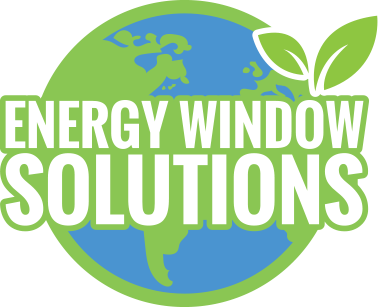
What Makes Energy Efficient Windows, Efficient? | Fort Worth, TX
Photo By CreativaStudio at istock
You’ve probably heard commercials or seen flyers by home repair places about how they make the best energy efficient windows in Fort Worth, TX. But what exactly do all these types of windows that proclaim that they are energy efficient actually mean? You’ve probably heard of Energy Star rated windows but what gets qualified for that? When you want windows replaced you want to make sure that those windows do the best to keep your energy costs down all year as well as be stylish and at a price you can afford. We’ll be going through some of the features that are added to windows as well as a short breakdown of what it takes to get Energy Star Certified.
Frames And Sashes
Many companies use a wide variety of framing materials to hit their energy efficiency criteria. The two most common materials nowadays are wood and vinyl and both have their advantages and disadvantages. Vinyl windows are much lower maintenance than wood and are designed to give better thermal insulation through the whole window. There will be air gaps, or sometimes foam insulated gaps, between the frame to help improve thermal performance and the thicker the vinyl, the better it will withstand the hot sun. Wood windows on the other hand are great for historical houses but traditional wooden windows are extremely high maintenance. Wood will withstand ultraviolet rays better than most vinyl windows but modern wood window construction has aluminum cladding inserted to reduce maintenance and increase lifespan between major replacement or repair.
Weather Stripping
Having weather stripped windows adds another element to increase energy efficiency that helps protect against air leaks. These strips will go inside the frame of the window so when you close the window it improves the seal of the window. The rule is that the less air that leaks through, the more likely it is you’ll have energy efficient windows.
Low-E Glass
Low-E stands for “low emissivity” which is a thin layer of metallic particles applied to glass to help act as a filter for only allowing some ultraviolet rays into the home with these energy efficient windows. Glass is made Low-E when it is manufactured and this blocking system helps reflect ultraviolet ways back outside the home and will help decrease the temperature of the house. There are three big benefits of having Low-E glass installed, it reduces your energy costs, it reduces ultraviolet rays in the home, and it only does a partial block of natural light. In fact it won’t appear like it’s blocking a lot of the heat, meaning it’s possible that you won’t notice the reduced light.
Having Multiple Window Panes
Glass on it’s own is not a good insulator. If you have ever been in the north during the winter and been in a building that only had single pane windows you’ll have noticed condensation on the glass and you would be able to feel the cold coming through. In the summer in Texas you would notice the heat near the windows and you’d feel it on the glass. Adding panes of glass with a sealed air compartment between the panes of your replacement windows really makes them energy efficient windows. You can have three pane windows as well to add another pocket, although historically the three pane windows have had reliability issues.
Gas In The Gaps
In those multiple pane energy efficient windows that have sealed air chambers there needs to be a special gas used or else you could get condensation buildup. This will help keep the seal in the window and prevent condensation. There are three main kinds of gas used in this application, they are argon, krypton, and xenon.
Argon is the most popular choice for energy efficient windows as it is the least expensive. Even though it is inexpensive it offers a good level of insulating performance. The next step up would be krypton. Krypton is more dense, leading to a higher insulation rating, and is the standard in thin gap windows like triple pane variants because it works better in those applications. The final choice, xenon is the best performer of the here, but is also the most expensive by a long shot. It’s cost over the others compared to the savings however means that if you aren’t going to get a LEED (Leadership in Energy and Environmental Design) certified building you likely won’t be going for xenon at this time.
Warm Edge Spacers
A spacer system that is built for energy efficient windows will help increase the structural integrity of the window to prevent bowing during the changes in external temperature. Spacer systems give insulation to the edge of the glass area as well, which is the most vulnerable part of a window to temperature transference.
What Does Energy Star Ratings Mean?
Energy Star is a federal rating system put on appliances, insulation, windows, and more to determine the operating costs and the effect it has on your home’s energy bills. For Windows in Fort Worth, TX energy efficient windows need to have a u-factor less than or equal to 0.3 and a measure called SHGC of less than or equal to 0.25. A U-factor is measured by the amount of heat energy wasted in an hour for the window unit. The SHGC stands for Solar Heat Gain Coefficient which is a windows ability to control solar heat. As all Energy Star ratings are not equal see if the Energy Star windows you’re looking at are at, below, or above your climate regions requirements.
When you’re ready to make the decision to purchase energy efficient windows in the Fort Worth area give the qualified experts at Energy Window Solutions a chance to earn your business. Energy Window Solutions can help with your homes windows, doors, siding, and gutters and their windows were rated the national winner of best of the best in 2017, so you know you’re getting a quality product.


